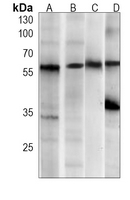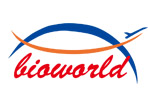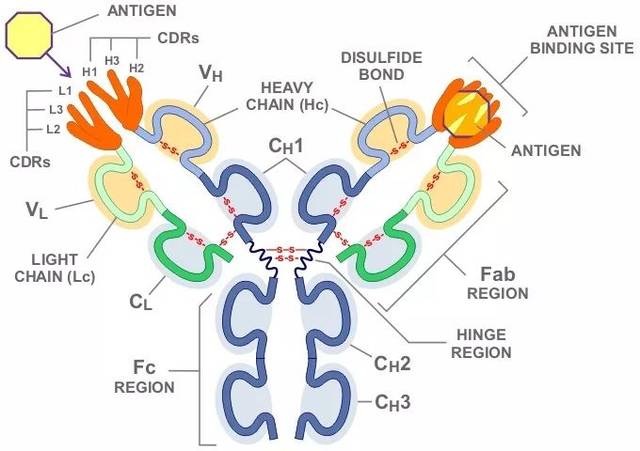Product Name :
USP14 monoclonal antibody Background :
Ubiquitinating enzymes (UBEs) catalyze protein ubiquitination, a reversible process countered by deubiquitinating enzyme (DUB) action . Five DUB subfamilies are recognized, including the USP, UCH, OTU, MJD, and JAMM enzymes. In humans, there are three proteasomal DUBs: PSMD14 (POH1/RPN11), UCH37 (UCH-L5), and Ubiquitin-Specific Protease 14, which is also known as the 60 kDa subunit of tRNA-guanine transglycosylase (USP14/TGT60 kDa). USP14 is recruited to the proteasome through its reversible association with the PSMD2 (S2/hRPN1) subunit of the 19S regulatory particle. Whereas PSMD14 appears to promote substrate degradation , USP14 is thought to antagonize substrate degradation . While the underlying mechanism for the opposing roles of these two proteasomal DUBs is still uncertain, it is thought that USP14 removes ubiquitin from substrate upon docking of the substrate with the 26S proteasome. Furthermore, USP14 trims ubiquitin residues from the distal end of the polyubiquitin chain, thus decreasing the affinity of the chain for the ubiquitin receptors of the proteasome, and allowing for enhanced substrate stability . Studies have elucidated a physiologic role for USP14 in regulating synaptic activity in mammals . Research studies have shown that targeting this activity with small molecule inhibitors has potential benefits for the treatment of neurodegenerative diseases and cancer . Product :
Mouse IgG1. Liquid in PBS, pH 7.3, 30% glycerol, and 0.01% sodium azide. Storage&Stability :
Store at 4°C short term. Aliquot and store at -20°C long term. Avoid freeze-thaw cycles. Specificity :
Recognizes endogenous levels of USP14 protein. Immunogen :
Recombinant fusion protein of human USP14. The exact sequence is proprietary. Conjugate :
Unconjugated Modification :
Unmodification
USP14 monoclonal antibody Background :
Ubiquitinating enzymes (UBEs) catalyze protein ubiquitination, a reversible process countered by deubiquitinating enzyme (DUB) action . Five DUB subfamilies are recognized, including the USP, UCH, OTU, MJD, and JAMM enzymes. In humans, there are three proteasomal DUBs: PSMD14 (POH1/RPN11), UCH37 (UCH-L5), and Ubiquitin-Specific Protease 14, which is also known as the 60 kDa subunit of tRNA-guanine transglycosylase (USP14/TGT60 kDa). USP14 is recruited to the proteasome through its reversible association with the PSMD2 (S2/hRPN1) subunit of the 19S regulatory particle. Whereas PSMD14 appears to promote substrate degradation , USP14 is thought to antagonize substrate degradation . While the underlying mechanism for the opposing roles of these two proteasomal DUBs is still uncertain, it is thought that USP14 removes ubiquitin from substrate upon docking of the substrate with the 26S proteasome. Furthermore, USP14 trims ubiquitin residues from the distal end of the polyubiquitin chain, thus decreasing the affinity of the chain for the ubiquitin receptors of the proteasome, and allowing for enhanced substrate stability . Studies have elucidated a physiologic role for USP14 in regulating synaptic activity in mammals . Research studies have shown that targeting this activity with small molecule inhibitors has potential benefits for the treatment of neurodegenerative diseases and cancer . Product :
Mouse IgG1. Liquid in PBS, pH 7.3, 30% glycerol, and 0.01% sodium azide. Storage&Stability :
Store at 4°C short term. Aliquot and store at -20°C long term. Avoid freeze-thaw cycles. Specificity :
Recognizes endogenous levels of USP14 protein. Immunogen :
Recombinant fusion protein of human USP14. The exact sequence is proprietary. Conjugate :
Unconjugated Modification :
Unmodification
-
 Western blot analysis of USP14 expression in K562 (A), Jurkat (B), mouse brain (C), rat brain (D) whole cell lysates.
Western blot analysis of USP14 expression in K562 (A), Jurkat (B), mouse brain (C), rat brain (D) whole cell lysates.
Bioworld Biotech only provide peptides for our antibodies and do not provide additional peptide customization services.
Price/Size :
USD 368/1mg/vial
Tips:
For phospho antibody, we provide phospho peptide(0.5mg) and non-phospho peptide(0.5mg).Describe :
Blocking peptides are peptides that bind specifically to the target antibody and block antibody binding. These peptide usually contains the epitope recognized by the antibody. Antibodies bound to the blocking peptide no longer bind to the epitope on the target protein. This mechanism is useful when non-specific binding is an issue, for example, in Western blotting (WB) and Immunohistochemistry (IHC). By comparing the staining from the blocked antibody versus the antibody alone, one can see which staining is specific; Specific binding will be absent from the western blot or IHC performed with the neutralized antibody.Formula:
Synthetic peptide was lyophilized with 100% acetonitrile and is supplied as a powder. Reconstitute with 0.1 ml DI water for a final concentration of 10 mg/ml.The purity is >90%,tested by HPLC and MS.
Storage:
The freeze-dried powder is more stable. For short time at 2-8°C. For long term storage store at -20°C.
Note :
This product is for research use only (RUO only). Not for use in diagnostic or therapeutic procedures.
 USP14 monoclonal antibody
USP14 monoclonal antibody  Datasheet
Datasheet COA
COA MSDS
MSDS SHIP
SHIP